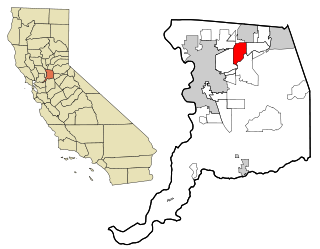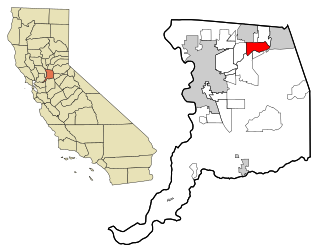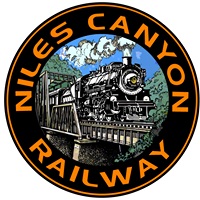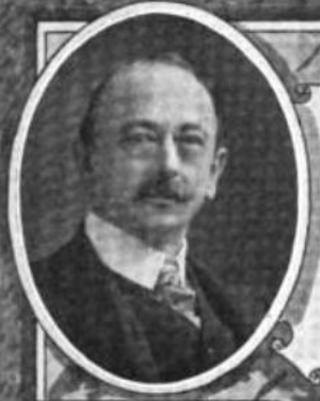
Sacramento is the capital city of the U.S. state of California and the seat of Sacramento County. Located at the confluence of the Sacramento and American Rivers in Northern California's Sacramento Valley, Sacramento's 2020 population of 524,943 makes it the fourth-most populous city in Northern California, the sixth-most populous in the state, the ninth-most populous state capital,and the 35th most populous in the United States. Sacramento is the seat of the California Legislature and the governor of California. Sacramento is also the cultural and economic core of the Greater Sacramento area, which at the 2020 census had a population of 2,680,831, the fourth-largest metropolitan area in California.

Vacaville is a city located in Solano County, California, United States. It is located 35 miles (56 km) from Sacramento and 55 miles (89 km) from San Francisco, it is on the edge of the Sacramento Valley in Northern California. The city was founded in 1851 and is named after Juan Manuel Vaca.

Carmichael is a census-designated place (CDP) in Sacramento County, California, United States. It is an unincorporated suburb in the Greater Sacramento metropolitan area. The population was 79,793 at the 2020 census.

Fair Oaks is a census-designated place (CDP) in Sacramento County, California, United States. It is part of the Sacramento–Arden-Arcade–Roseville Metropolitan Statistical Area. The population was 32,514 at the 2020 census, up from 30,912 at the 2010 census. The Fair Oaks zip code is 95628 and its area codes are 916 and 279. It is bordered to the west by Carmichael, north by the city of Citrus Heights, to the east by Orangevale, and to the south by the American River.

The Sacramento Bee is a daily newspaper published in Sacramento, California, in the United States. Since its foundation in 1857, The Bee has become the largest newspaper in Sacramento, the fifth largest newspaper in California, and the 27th largest paper in the U.S. It is distributed in the upper Sacramento Valley, with a total circulation area that spans about 12,000 square miles (31,000 km2): south to Stockton, California, north to the Oregon border, east to Reno, Nevada, and west to the San Francisco Bay Area.

KFBK is a commercial AM radio station in Sacramento, California. It is simulcast on KFBK-FM 93.1 MHz. KFBK-AM-FM air a news-talk radio format and are owned by iHeartMedia, Inc. The studios and offices are on River Park Drive in North Sacramento, near the Arden Fair Mall.

Bella Vista High School is a public high school in Fair Oaks, California. It is a member of the San Juan Unified School District and serves eastern Fair Oaks and southern Orangevale. In 2003, the California Department of Education's School Recognition Program honored Bella Vista High School as a "California Distinguished School". It was also the only school in Sacramento County to receive this honor in 2003. In 2009, it received the same recognition again from the California Department of Education. On November 18, 2010, the school celebrated its 50th anniversary with a special presentation for all past and current students. The presentation included a guided tour of the school spotlighting where changes have been made throughout the campus since the school's foundation in 1960.

The Niles Canyon Railway (NCRy) is a heritage railway running on the first transcontinental railroad alignment through Niles Canyon, between Sunol and the Niles district of Fremont in the East Bay of the San Francisco Bay Area, in California, United States. The railway is listed on the National Register of Historic Places as the Niles Canyon Transcontinental Railroad Historic District. The railroad is operated and maintained by the Pacific Locomotive Association which preserves, restores and operates historic railroad equipment. The NCRy features public excursions with both steam and diesel locomotives along a well-preserved portion of the first transcontinental railroad.

The Sacramento Northern Railway was a 183-mile (295 km) electric interurban railway that connected Chico in northern California with Oakland via the state capital, Sacramento. In its operation it ran directly on the streets of Oakland, Sacramento, Yuba City, Chico, and Woodland. This involved multiple car trains making sharp turns at street corners and obeying traffic signals. Once in open country, SN's passenger trains ran at fairly fast speeds. With its shorter route and lower fares, the SN provided strong competition to the Southern Pacific and Western Pacific Railroad for passenger business and freight business between those two cities. North of Sacramento, both passenger and freight business was less due to the small town agricultural nature of the region and due to competition from the paralleling Southern Pacific Railroad.
California's 3rd congressional district is a U.S. congressional district in California. It includes the northern Sierra Nevada and northeastern suburbs of Sacramento, stretching south to Death Valley. It encompasses Alpine, Inyo, Mono, Nevada, Placer, Plumas, and Sierra counties, as well as parts of El Dorado, Sacramento, and Yuba counties. It includes the Sacramento suburbs of Roseville, Folsom, Orangevale, Rocklin, Auburn, and Lincoln, along with the mountain towns of Quincy, South Lake Tahoe, Truckee, Mammoth Lakes, and Bishop. The district is represented by Republican Kevin Kiley.
The history of Sacramento, California, began with its founding by Samuel Brannan and John Augustus Sutter, Jr. in 1848 around an embarcadero that his father, John Sutter, Sr. constructed at the confluence of the American and Sacramento Rivers a few years prior.

Roger Niello is an American politician who is currently in the California State Senate representing the 6th district, which includes portions of Sacramento and Placer counties. He is a Republican who had also served in the California State Assembly from 2004 to 2010.

Oak Park is a neighborhood in Sacramento, California. The McGeorge School of Law, University of the Pacific Sacramento Campus, Sacramento High School, and Christian Brothers High School are located in this neighborhood.
Susan Peters is a Republican who serves on the Sacramento County Board of Supervisors. Supervisor Peters has served on the Board since January 4, 2005.

The California Governor's Mansion is the official residence of the governor of California, located in Sacramento, the capital of California. Built in 1877, the estate was purchased by the State of California in 1903 and has served as the executive residence for 14 governors. The mansion was occupied by governors between 1903–1967 and 2015–2019. Since 1967, the mansion has been managed by California State Parks as the Governor's Mansion State Historic Park.

Jurupa Valley is a city in the northwest corner of Riverside County, California, United States. It was the location of one of the earliest non-native settlements in the county, Rancho Jurupa. The Rancho was initially an outpost of the Mission San Gabriel Arcángel, then a Mexican land grant in 1838. The name is derived from a Native American village that existed in the area prior to the arrival of Europeans.

Frederick William Henshaw was an American attorney and Associate Justice of the Supreme Court of California from December 29, 1894, to January 1, 1918, whose 23-year tenure is among the longest on the high court.

Andreas Borgeas is an American attorney, politician, and academic who served as a member of the California State Senate from the 8th district, which included parts of the Central Valley and the Sierra Nevada. Prior to being elected to the state Senate, he was a member of the Fresno County Board of Supervisors. He represented all or portions of Amador, Calaveras, Fresno, Inyo, Madera, Mariposa, Mono, Sacramento, Stanislaus, Tulare, and Tuolumne counties.
Samuel Altshuler was a clothing merchant, mine owner, and industrial developer in the states of Washington and California. He opened and owned clothing stores in Whatcom, Washington, and his native San Francisco, California, and built several business buildings in both cities.



















